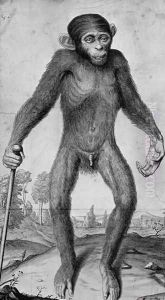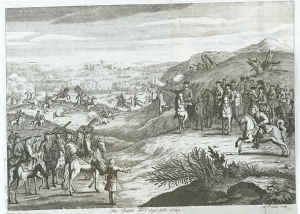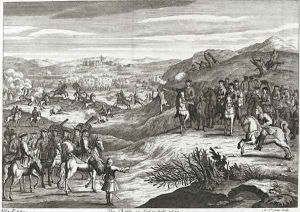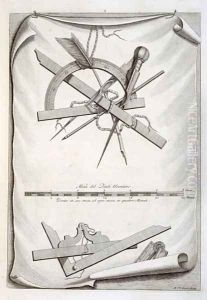Michael van der Gucht Paintings
Michael van der Gucht was a Flemish engraver who was born in Antwerp, Belgium, in 1660. He was part of a family of artists; his father, Gerard van der Gucht, was also an engraver. In pursuit of his craft, van der Gucht moved to England around the late 17th century, where he would spend the remainder of his career and life.
Van der Gucht quickly made a name for himself in England as a talented engraver. He worked on numerous projects, including illustrations for books and portraits. One of his most significant contributions was to the field of book illustration, where he produced engravings for various publications, often collaborating with prominent artists of the day who would provide the initial designs. This period saw a rise in the production of illustrated books, and van der Gucht's engravings were well-regarded for their clarity and attention to detail.
His work encompassed a variety of subjects, from religious and mythological scenes to more contemporary themes. Michael van der Gucht was also known for his engravings after the old masters as well as living artists of his time. In addition to his book illustrations, van der Gucht produced individual prints and was involved in the creation of maps and architectural engravings.
Despite his success, there is not an abundance of personal details about van der Gucht's life. It is known that he married and had children, one of whom, Gerard van der Gucht, followed in his father's footsteps to become a notable engraver in his own right.
Michael van der Gucht's contributions to the art of engraving continued to influence the field long after his death in 1725. He was a part of the early wave of Flemish and Dutch artists who brought their skills and artistic traditions to England, helping to shape the British art scene during a period that saw the country growing in cultural and artistic sophistication.



